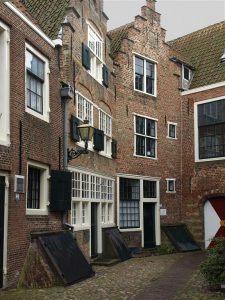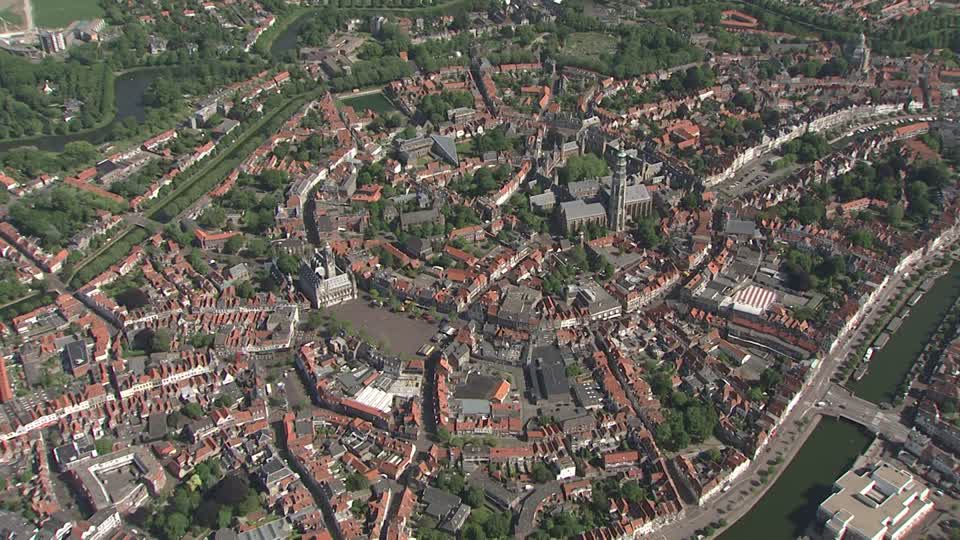Have you ever asked yourself ‘What do I actually know about Middelburg?’ Have your parents/friends/significant others ever asked you about our beautiful school building? I am willing to guess and say that has indeed happened. This article will attempt to fill that gap of knowledge and next time someone asks, – ‘So how old is this building?’ – you will know the answer!
First of all, our lovely school building! Did you know that this building was originally the building for the municipality and thus the city hall? It was originally built during the 15th and 16th century in a late gothic style (I am looking at you, art history students). Unfortunately, the entire interior of the building burned down at the start of the Second World War, however the front of the building remains mostly original. Fun fact: the tower with the clock is known as ‘Malle Betje’ (silly billy) because it used to run behind the clock of the Lange Jan.
Secondly, the Lange Jan and the abbey complex. The tower that defines our city view has been standing there since the second half of the 14th century. However it used to look quite different to what it does now. Over the years several fires have destroyed the top of the tower, each time it was reconstructed in a slightly different way. The Lange Jan had been added to the abbey complex that has existed since the early 12th century. It used to be a Roman Catholic monastery before the protestant Dutch took the city from the catholic Spanish in the Siege of Middelburg (1572). During Napoleonic times it became the site for the provincial house, which part of the complex remains today. It also houses the Zeeuws Museum and the Roosevelt Institute for American studies.
Next to the abbey you can find the slavery monument. A big block standing in the middle of the road next to the fountain. Unless you have taken one of the history courses at UCR you’re probably unaware of the rich slave trading history our little town has. In 1720 the Middelburgse Commercie Compagnie was established (Trading Company of Middelburg). From 1730 onwards they too started to meddle in slave trade, making Middelburg an increasingly rich town. Remnants of its slave trading past can be found all over the town, from names on houses to the voluptuous 18th century city palace that houses the current day archives.

Lastly, somewhere between the station and the dam square you can find the Kuiperspoort. It is one of those hidden treasures that one has to know about. This little alley makes you step back in time. Originally constructed in the 16th century, it was eventually bought by the ‘kuipers’ guild. Who constructed tubs to transport goods in. The old warehouses are now mainly used for residential purposes but it still makes for some very nice pictures.

So now the next time someone asks you something about our beloved towns history you are equipped to sound like a professional tour guide, because trust me this tour was tested and approved. Hopefully these are facts you will remember until the day you need them. In the meantime go explore Middelburg!
Gabriëlle La Croix, Class of 2017, is a History and Art History Major, from Ede, The Netherlands
Featured Photo Credit: Framepool

